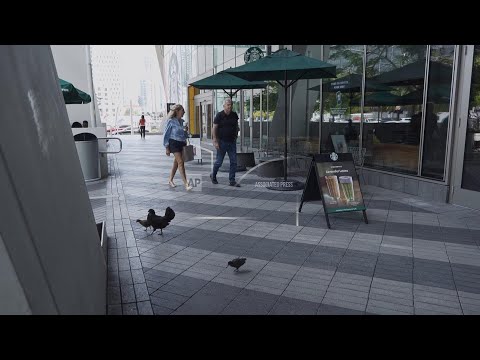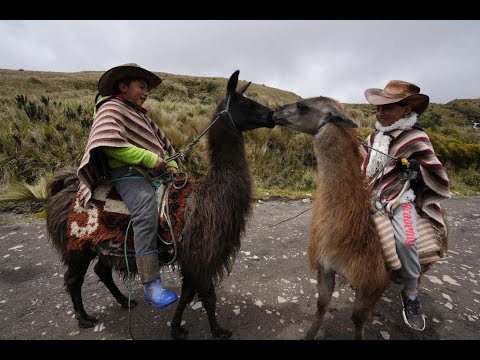(26 May 2025)
RESTRICTION SUMMARY:
ASSOCIATED PRESS
Miami – 7 May 2025
1. Close-up chicken and chick
2. Wide of chickens outside Starbucks entrance
3. Wide of Rooster and chicken near road
4. Rooster trying to cross busy road
5. SOUNDBITE (English) Paul George, Resident Historian at HistoryMiami Museum:
"I walk this neighborhood of Little Havana daily, and I will see roosters and the rest of the family, the hens and the baby chickens. I’ll see them daily, and I’ll hear them daily. Other parts, it really varies, but we’re beginning to see them spread in a lot of places, including, shockingly, downtown Miami.”
6. Wide of men in suits in downtown Miami
7. Wide of Rooster in downtown
8. Two roosters amid plants
9. SOUNDBITE (English) Paul George, Resident Historian at HistoryMiami Museum:
"It’s in some ways a cultural thing and almost a sentimental thing that a lot of people have grown up in rural areas, in Cuba as well as other parts, especially Central America, and they’ve always had these hens and roosters around. And I think they’ve not literally brought them with them, but they’ve acquired them, and they perpetuated them over time."
10. Rooster sculpture in Little Havana
11. Wide of Little Havana Street with rooster sculpture
12. Set-up shot of Jakelin Llaguna, owner of Little Havana Visitors Center
13. SOUNDBITE (English) Jakelin Llaguna, owner of Little Havana Visitors Center:
"To us, it represents part of what the rooster history is, new beginnings, new awakenings. Every morning the rooster crows and you have a new awakening. The Cubans came to Little Havana when the revolution came into Cuba and they settled in this neighborhood. So, they had a new beginning in Little Havana.”
14. Mosaic sign of Little Havana with rooster
15. Mid of Rooster crowing
16. People walking in Little Havana
17. SOUNDBITE (English) Jakelin Llaguna, owner of Little Havana Visitors Center:
"I think it’s put Little Havana on the map, to be honest with you. If you come to Little Havana, you’re not going to forget the rooster. You don’t see it anywhere else, so it’s so visible, it’s a happy… You know, it’s become part of who we are here."
18. Mid of two roosters
19. Rooster crowing with flamingo sign in background
STORYLINE:
Flamingos, pelicans, herons and parrots are just a few of the wild birds that call Miami home, but it’s the roosters, hens and baby chicks that have come to rule the roost in recent years.
Not only found in residential neighborhoods like Little Havana, Little Haiti and Wynwood, the fowl families are also making their home among the high-rises and government buildings downtown. And while some find the crowing to be a nuisance, many have adopted the rooster as an unofficial mascot for the city.
Paul George, the resident historian at HistoryMiami Museum, said the chickens are closely connected to the people who have moved to Miami over the decades. For years, the domesticated birds were mostly kept in backyards, but George said he began to notice their feral cousins wandering in public areas about 20 years ago.
Wild chickens can be found in many communities around Florida, from Key West to Tampa to St. Augustine, along with other large cities throughout the U.S., like New Orleans, Houston and Los Angeles.
But Miami’s Little Havana neighborhood truly adopted the birds as a symbol in 2002 when 6-foot-tall (2-meter-tall) fiberglass rooster statues began appearing outside shops and restaurants along Calle Ocho as part of a campaign to celebrate the area’s culture.
—-
AP video by Daniel Kozin
Find out more about AP Archive: http://www.aparchive.com/HowWeWork
Twitter: https://twitter.com/AP_Archive
Facebook: https://www.facebook.com/APArchives
Instagram: https://www.instagram.com/APNews/
You can license this story through AP Archive: http://www.aparchive.com/metadata/youtube/5d7e9a80e40a4480bffa336a8c0c8a34
Author: AP Archive
Go to Source
News post in May 31, 2025, 6:04 am.
Visit Our Sponsor’s:
News Post In – News





